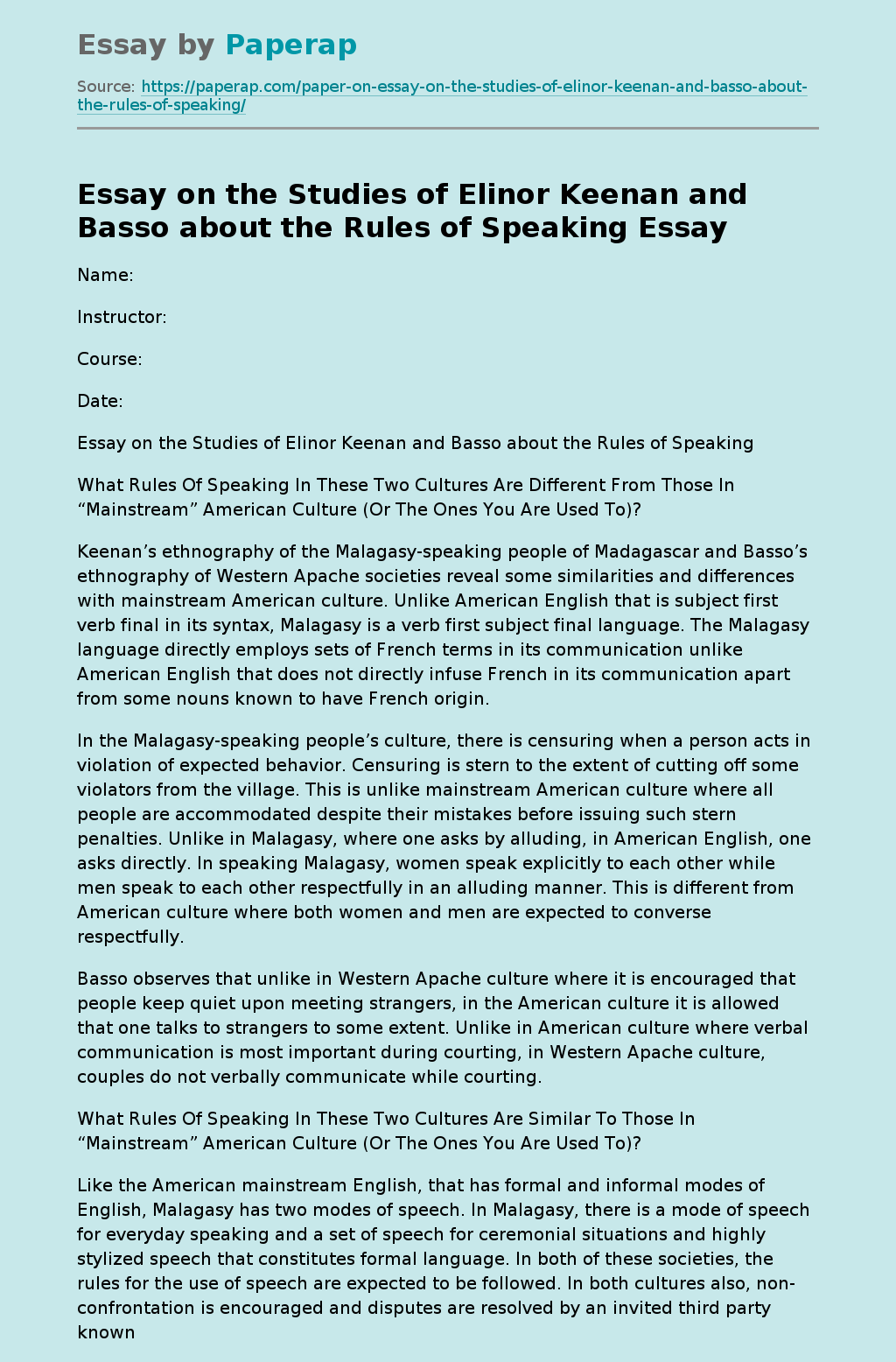Essay on the Studies of Elinor Keenan and Basso about the Rules of Speaking
Keenan’s ethnography of the Malagasy-speaking people of Madagascar and Basso’s ethnography of Western Apache societies reveal some similarities and differences with mainstream American culture. Unlike American English that is subject first verb final in its syntax, Malagasy is a verb first subject final language. The Malagasy language directly employs sets of French terms in its communication unlike American English that does not directly infuse French in its communication apart from some nouns known to have French origin.
In the Malagasy-speaking people’s culture, there is censuring when a person acts in violation of expected behavior.
Censuring is stern to the extent of cutting off some violators from the village. This is unlike mainstream American culture where all people are accommodated despite their mistakes before issuing such stern penalties. Unlike in Malagasy, where one asks by alluding, in American English, one asks directly. In speaking Malagasy, women speak explicitly to each other while men speak to each other respectfully in an alluding manner.
This is different from American culture where both women and men are expected to converse respectfully.
Basso observes that unlike in Western Apache culture where it is encouraged that people keep quiet upon meeting strangers, in the American culture it is allowed that one talks to strangers to some extent. Unlike in American culture where verbal communication is most important during courting, in Western Apache culture, couples do not verbally communicate while courting.
Like the American mainstream English, that has formal and informal modes of English, Malagasy has two modes of speech.
In Malagasy, there is a mode of speech for everyday speaking and a set of speech for ceremonial situations and highly stylized speech that constitutes formal language. In both of these societies, the rules for the use of speech are expected to be followed. In both cultures also, non-confrontation is encouraged and disputes are resolved by an invited third party known to both disagreeing sides.
In both languages, there is the use of additional figures of speech such as metaphors and similes. Proverbs are also extensively used in speech. Allusion is widely used in both cultures. Use of explicit terms is also discouraged. In both languages, indirectness in speech is called for, and affront is avoided in situations where respect is required. In both Western Apache and mainstream American culture though, it is advised that people keep quiet or talk less when mourning the death of a close person.
How Research like Keenan’s and Basso’s Help Us Understand and Avoid Intercultural Miscommunication
Findings of such research help people accept the norms of other cultures. Upon understanding reasons why Western Apache societies refrain from speech for example, people from other cultures will know when to talk and when to keep quiet when communicating with them. Also, upon reading Keenan’s findings, we know the type of behavior to expect from Western Apache societies. Such research opens people’s eyes to the realities of other cultures that are beyond their own. Keenan’s research teaches the Vakinankaratra language to some extent. Such knowledge guards society from disregard for other people’s culture and communication barriers while conversing with them.
Essay on the Studies of Elinor Keenan and Basso about the Rules of Speaking. (2019, Jan 31). Retrieved from https://paperap.com/paper-on-essay-on-the-studies-of-elinor-keenan-and-basso-about-the-rules-of-speaking/

